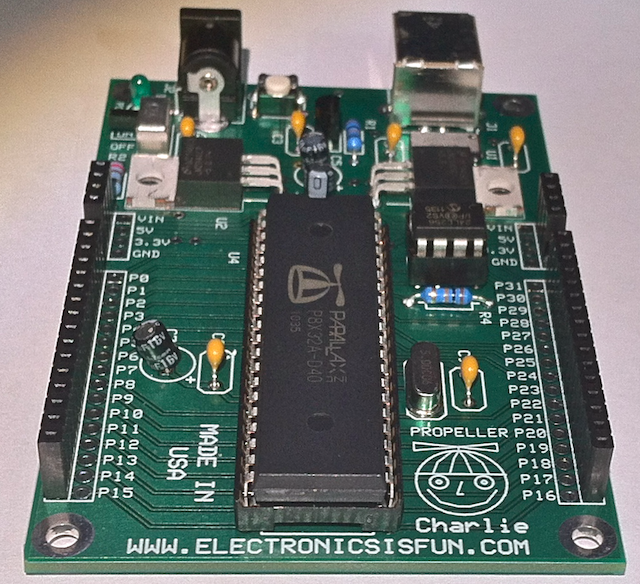2020. 2. 20. 03:13ㆍ카테고리 없음
I've been reading these forums for a while but this is my first post. I've noticed that the parallax propeller rarely gets a mention and I'm interested to see who on these forums actually uses it and their opinion of it.
I've been using it a couple of years, it's my first experience with microcontrollers and I've found it incredibly easy to learn and capable of pretty much any task I need. I have had a play with PIC's and find the learning curve quite steep compared to the prop. One of the big disadvantages with the prop however would be the cost when you need a micro for a simple task. This may be asking a bit much but it would be great if Dave could do a blog on this device if he has never used it and give his first impressions of it. The impression I get of the Propeller is that it is a bit of an insult to someone that already has microcontroller development experience. So much so that it seems like they have targeted the hobby market almost exclusively. Propellers don't have interrupts, for example.
Parallax plays this up as a benefit. Yes, it's easier for beginners to get things working but if you're comfortable with interrupts then it's a drawback.
You wind up having to poll for everything you would have otherwise used interrupts for. The other problem is that the primary programming language is the proprietary (interpreted) language 'Spin.' This doesn't sit will with a lot of people since they are likely already comfortable with C or C and have existing code bases that they wouldn't be able to leverage.
There is, however, a port of gcc for the Propeller which piques my interest. Propeller is interesting. Prop2 is going to be kickass. But back to the prop1. Whats the companies biggest seller?
The prop is a step up from basic stamps. Increased ram, etc and need something more than basic to power it, hence spin (piece of shit it is). I think they saw the writing on the wall of people wanting to go from basicstamps to something bigger, and back then you had pics and avrs and embedded c.
Full on embedded development with c, thats a big step from basic! So they dedicate half the chips memory space to embedding the basic like spin interpreter and tv output control code + font and waste half the chips 64kb ram space. So they made an IDE for it and made it friendly (predates arduino release).
Its great for what it is (and prop2 is very interesting!) but its not meant for pic32 people. Being able to dedicate an individual core to handle a specific task has massive advantages over having to maintain interrupt service routines. There are 8 cores to use. And I've never got the point where I needed more than 6 or 7 in even the most complex applications - e.g. I can have one core handling pushbuttons and switches, another core driving an LCD display, another core doing just maths, another core doing serial comms on the USB to my laptop, another core driving status LEDs. As far as rapid development goes, it is hard to beat. Being easy to use is a.bonus., not a drawback.
You have to be kidding. The only correct statement here is the one about the chip being interesting.

It is reasonably-priced, well-supported, and a good option for a lot of tasks. Now please don't get me wrong - I use all sorts of processors for all sorts of tasks. I have no favourites. I use the propeller for some of my projects, and in general I have found it to be easy to use, powerful, unbeatable in terms of the time needed to develop and deploy applications, very well supported in forums, very well supported in terms of code libraries (object exchange), and a pleasure to use. The only drawback I have ever found is that it has no onboard ADC (but that's a minor drawback, and it will change with the next generation prop2). If that's your idea of balance I would love to see you being biased. It is too expensive for most things, like I said.

Parallax Propeller Forum
The propeller chip + 32K EEPROM costs £10.45: The PIC32MX320F064H, which is itself overkill for most things (along with its many, many useful peripherals, which are absent on the propeller, costs just £5.71, and has 64K of flash rather than 32K: And then there's all the rest of the PICs with the useful peripherals which are even less costly than that one. I haven't experienced the support so I can't comment on that.